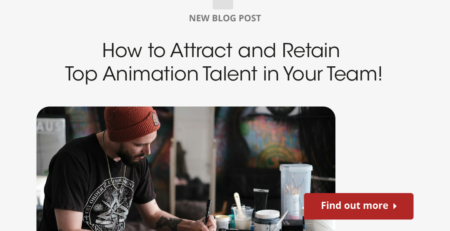Higher Ed and the Creative Job Market
The decision to pursue higher education shouldn’t be taken lightly. In many countries, it’s a huge financial commitment. Many creative people who are aiming for careers in design or programming may wonder whether such a commitment is necessary for the jobs they want.
There’s no easy answer to this question. As companies continue to center design in their organizations, universities have followed suit with creative degree programs. So, is college worth it for creatives? While earning a degree certainly won’t hurt your chances of landing a job, it’s not always a requirement.
Whether you’re about to enter the job market for the first time or you’re thinking about going back to school, you can read through this guide to education for creative jobs to find the information you need to make the best decision.
What is a Creative Degree Program?
Legacy designs schools like the Rhode Island School of Design (RISD) have been around for a long time – over a century, to be exact. RISD offers undergraduate degrees in Fine Arts with concentrations such as graphic design, interior architecture, industrial design, and textiles, among many others.
Other universities have similar programs. Generally, the design courses are supported by a variety of liberal arts classes. The goal is to produce a well-rounded graduate with particular, hands-on knowledge of a particular creative field.
Students usually receive their hands-on experience in studio courses, during which they have particular projects to work on. One huge advantage to these four-year programs and their graduate counterparts is that the graduate has the opportunity to create a portfolio so that they can apply for jobs once they have their degree.
Creative Degree Program Alternatives
Not all courses offered by higher-ed organizations result in a four-year degree. Smaller educational facilities called portfolio schools are a good option for those who wish to skip any liberal arts classes and concentrate on building a portfolio and learning the skills they need to land a creative job.
Portfolio school programs take less time than a degree. They’re generally less expensive, but they can still carry a fairly high price tag. On the plus side, everyone in the program is more likely to go into the same field, which means students can make more impactful connections earlier on.

Incubators for entrepreneurs or single courses are also available for people who aren’t pursuing a degree or want to continue their education in a shorter time frame. All of these are great options for skill-building and will look great on a resume if you present them in the right way.
Higher Ed for Creative Jobs
One of the biggest questions on prospective creatives’ minds is whether a degree is necessary. Is college worth it if you want to be a designer, for example?
Given the high cost and time commitment of universities and portfolio schools, this question makes sense. Some people have to find work immediately to provide for themselves and family members and a long-term education may be difficult to coordinate or out of the question entirely.
Another problem is that not every employer treats education the same. Job boards are infamous for requiring extremely high levels of education for entry-level positions. That has a lot to do with the increasingly high number of people who graduate with degrees and certificates.
The shortest answer to the higher ed question is that a proper education in a related field will prepare you for a creative career and make your application more appealing in the eyes of potential employers. That being said, applying for the wrong program or coasting through without putting in much effort can tank your resume.
Choosing the Right Creative Degree Program
So many jobs fit under the creative umbrella. Design thinking is an increasingly useful problem-solving framework for just about any business you can imagine, so a design education is a valuable asset.
When you start looking around at portfolio schools and universities, make sure to look for one that will not only give you a well-rounded education but also afford you the opportunity to take risks and experiment in your field. That’s how you make a portfolio that will outshine the competition.
Narrowing your degree program can help tailor it toward your interest, but if it’s too narrow and your interest fades you could be in trouble. Applying for a product design position with a video game design degree is a bit challenging, for example.
However, going into a narrow subject in your degree program also helps you discover whether you want to stay in that field or not. It’s not at all uncommon for students to switch majors once or twice. If you have the time and resources, this exploration is a great way to become a more well-rounded creative.
Climbing the Career Ladder
Alright, so maybe entry-level creative jobs can be gotten with or without a full four-year degree. But is college worth it if you want to make it to the top?
Many CEOs and CMOs didn’t complete or even attempt university programs. As you’ve probably seen from many job descriptions, work experience can be as valuable as a degree. In some cases, the more practical education may be even more appealing.
If you want to make it to the top of any company, you aren’t going to start right off applying for the CMO or a similar chief position. Unless you are incredibly lucky, you have to pay your dues for many years and demonstrate skills and passion to get into a top position.
Degrees and professional training are good boosts for creatives, though. No matter how high you set your sights, experience is the most important thing.
Practical Education for Creative Jobs
If you don’t have the resources for a degree program, you can still chart a course for a creative career by getting the right practical work experience. Many people start small, doing freelance creative work on the side to build up skills. In some cases, this might even be a second job.
The best advice for people in this kind of situation is to turn whatever kind of job you have into something that will help you get into the creative role you want. Take the time to study design thinking and the way creatives do their jobs and see what parts of that you can bring into your work.
Applying design thinking to your job isn’t just about volunteering to make displays or advertising materials, though. Try applying the five design thinking principles to the professional work environment and brainstorming inventive solutions that create a more pleasant user experience and meet business goals set by the higher-ups.
Although it’s not realistic to expect huge results from this method, every job is still an opportunity for experience. Think about some of the most common job interview questions: when was a time you were faced with a problem? How did you handle it? Can you think of a time you faced adversity at work?
If you start applying design thinking, you’ll have plenty of success stories for later job interviews. Perhaps your job is completely unrelated – if you can find out a way to educate yourself on the job, it doesn’t matter. It can still become evidence of your sharp creative skills.
Understanding Creative Jobs
If you want to be a creative, take the time to research all kinds of professions within that field and see how they work. YouTube, online seminars, and trade publications are replete with creatives sharing their stories and explaining their career path.
Once you understand how the creative job works, you’ll have a better idea about how to prepare for it. Naturally, a degree program or portfolio school will help you in this endeavor. But you can also get a pretty good idea about creative work without these options.
A very general aspect of creative work is that it isn’t always as creative as it appears. While UX/UI designers do a lot of charting, brainstorming, planning, and prototyping, they also have to do things like user research and data collection. Presenting these deliverables to stakeholders to make sure projects are going to achieve business goals may be a far cry from building graphics and logos.
Some people don’t see the creative appeal of careers like front-end developers or web design. Other positions like graphic design may be more suitable in that case. But don’t be too hasty to write off seemingly uncreative jobs. Many programmers and back-end developers view their work as a particular kind of creativity that may suit you well.
How to Make Your Education Work For You
Creative degree programs, portfolio schools, or real-world work experience are only going to be as attractive to employers as you make them. Think of your application and portfolio as a storytelling opportunity.
As well as keeping your portfolio updated with relevant case studies, you should also be able to explain your educational journey in a way that the people on the other side of the interview table can understand. Try to illuminate creative ideas with examples from your courses or projects.
Just like you might search for endorsements on LinkedIn, teamwork and accolades are also great for your resume. Teamwork is important for all creatives, even those on small teams or working solo, since higher-ups and other people will eventually come into the picture on a given project.
Most importantly, never present your education as a negative. Whether you couldn’t afford college or you wound up with a completely unrelated degree, no prospective employer wants to hear that you took nothing from it or blame your circumstances. Rather, highlight the parts of your education that are important.
For instance, if you got a degree in anthropology and apply to be a graphic designer, bring attention to the study of people and how that gives you better insight into users. You can almost always create common ground for disparate topics.
If you didn’t go to school for whatever reason, explaining how the education you did receive allowed you to build your skills and creative approach. In many cases, an unorthodox education is a great opportunity to demonstrate that you’re capable of taking initiative and thinking outside the box.
How Many Creatives Have Degrees?
According to the Bureau of Labor Statistics, a typical entry-level graphic designer has a bachelor’s degree but no on-the-job training or work experience. That may not always be the case, but it is similar to many other entry-level creative jobs.
Earning a degree is a fast way to show prospective employers that you can honor commitments and work hard for long periods. But they aren’t going to be nearly as impressed with education for creative jobs as they will be with the results. That means the portfolio.
Whatever education credentials you have, the resulting work samples will do far more to demonstrate your value as an employee than the diploma by itself. If you didn’t attend a university, finding ways to produce work samples can often get you hired in an entry-level position.
It’s hard to say what percentage of creatives have degrees, but there are without a doubt many who have certificates from portfolio schools or who rely almost exclusively on work experience to land jobs.
On-The-Job Training for Creatives
Many companies have upskilling and reskilling opportunities to keep their workforce on the cutting edge. Some other ways to gain work experience are internships, freelancing, or contract work. If none of that is possible yet, try doing some practice projects or even doing some work for free.
Beware of larger companies trying to get you to do work for free as part of the application process. Sometimes, they just want to get some fresh eyes on a current project, which means you could help their existing employees and not get hired in the end.
However, you’re much more likely to find a real-world project to work on if you can tackle it in your spare time. It’s a great way to build skills and professional connections when you’re just starting on the road to your creative career.
If you’re an aspiring graphic designer, for example, you might approach a local restaurant and volunteer to make them new menus or promotional materials. More complicated projects that involve users can be a bit more challenging to come by, but it’s certainly not impossible.
Helping any organization approach a problem with design thinking and user research will help improve your skills as a UX/UI designer, as will creating images and final products for your portfolio. Web designers can help build products or create their mockups, while social media experts can find plenty of internship opportunities, frequently with big-name businesses.
Is College Worth It For Creatives?
Sometimes a full four-year degree is a huge help to creatives when they’re applying for jobs and other times the degree is hardly worth it after graduation. It all depends on whether you can get the skills you want out of the program while you’re in it.
Unfortunately, not all universities or programs take the time to create innovative opportunities for their students. Enterprising creatives can still find small ways to showcase their skills and learn more about the profession they want to enter.
University programs might feel like the norm for just about any career whether it’s a creative one or not. However, while the percentage of people with a bachelor’s degree or higher increased to 36% from 2010 to 2019, that nonetheless means far below half of the working public have degrees.
There are plenty of alternatives for creatives who want to break into the industry but don’t have the resources or the desire to attend four-year schools. Portfolio schools and a wealth of free online educational tools are a huge help for creatives who have to blaze their own educational trail.

Conclusion:
Education for creative jobs can be earned in a variety of ways. Degree programs may present an all-inclusive package, but they also require a huge commitment of both time and money. You can make connections at a portfolio school or in online seminars like you could in a university program, plus you can avoid technically unrelated liberal arts courses if you prefer to do so.
Is college worth it for creatives? Many find that their degree helps them get the first job and rely on professional experience after that. If you have the resources and want to explore your field before jumping into the workforce, college is a great option. However, you can also use freelance work or unpaid projects to create a winning portfolio and make your way into a creative job.












